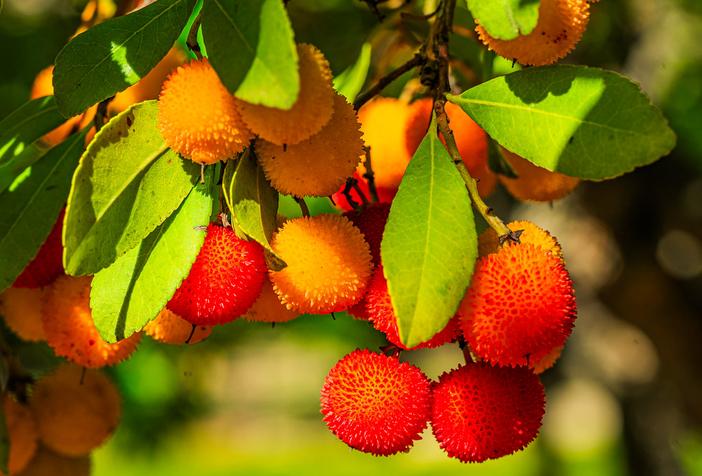Strawberry Tree
(Arbutus unedo)
Strawberry Tree (Arbutus unedo)
/
/

Pedro Cifuentes
PDM 1.0






































































































Estimated Native Range
Summary
Arbutus unedo thrives in a variety of conditions, making it a versatile choice for urban planting, residential landscapes, and as an ornamental feature. It is valued for its drought and frost resistance once established, and its tolerance to shade and salt spray makes it suitable for coastal gardens. It prefers full sun to part shade and requires well-drained soil, ideally acidic but tolerating alkaline conditions. It is generally free from serious pests and diseases but can be susceptible to Phytophthora root rot in poorly drained soils.CC BY-SA 4.0
Plant Description
- Plant Type: Shrubs, Trees
- Height: 10-15 feet
- Width: 10-15 feet
- Growth Rate: Moderate
- Flower Color: Pink, White
- Flowering Season: Spring, Fall, Winter
- Leaf Retention: Evergreen
Growth Requirements
- Sun: Full Sun, Part Shade
- Water: Medium
- Drainage: Medium, Slow
Common Uses
Bee Garden, Bird Garden, Border Plant, Butterfly Garden, Deer Resistant, Drought Tolerant, Edible*Disclaimer: Easyscape's listed plant edibility is for informational use. Always verify the safety and proper identification of any plant before consumption., Fire Resistant, Fragrant, Hedges, Hummingbird Garden, Potted Plant, Salt Tolerant, Showy Flowers, Street Planting
Natural Habitat
Mediterranean region, including Portugal, western Europe, and Ireland
Other Names
Common Names: Irish Strawberry-Tree, Cain, Cane Apple, Arbutus, Strawberry-Tree, Erdbeerbaum, Madroño, Borrachín, Fraisier En Arbre, Arbousier Commun
Scientific Names: , Arbutus unedo, Arbutus unedo var. serratifolia, Arbutus vulgaris, Arbutus unedo var. rubra, Arbutus microphylla, Arbutus nothocomaros, Arbutus intermedia, Arbutus unedo f. subcrenata, Arbutus unedo var. salicifolia
GBIF Accepted Name: Arbutus unedo L.